When The Plan doesn’t quite go to plan (Part II): The trials and tribulations of tagging mantas
Part II of II
D’Arros Island in November is nothing short of paradise. Coral reefs teeming with life, bright green palm fronds on white sandy beaches, and calm and flat turquoise seas. Well, usually calm and flat seas. The morning after we had deployed the first two satellite tags I quickly realised that I had been taking the smooth water surrounding D’Arros for granted. As well as not seeing any mantas at the cleaning station, we were now also dealing with wind and swell that made even small things – like getting our research equipment onto the boat – a challenge.
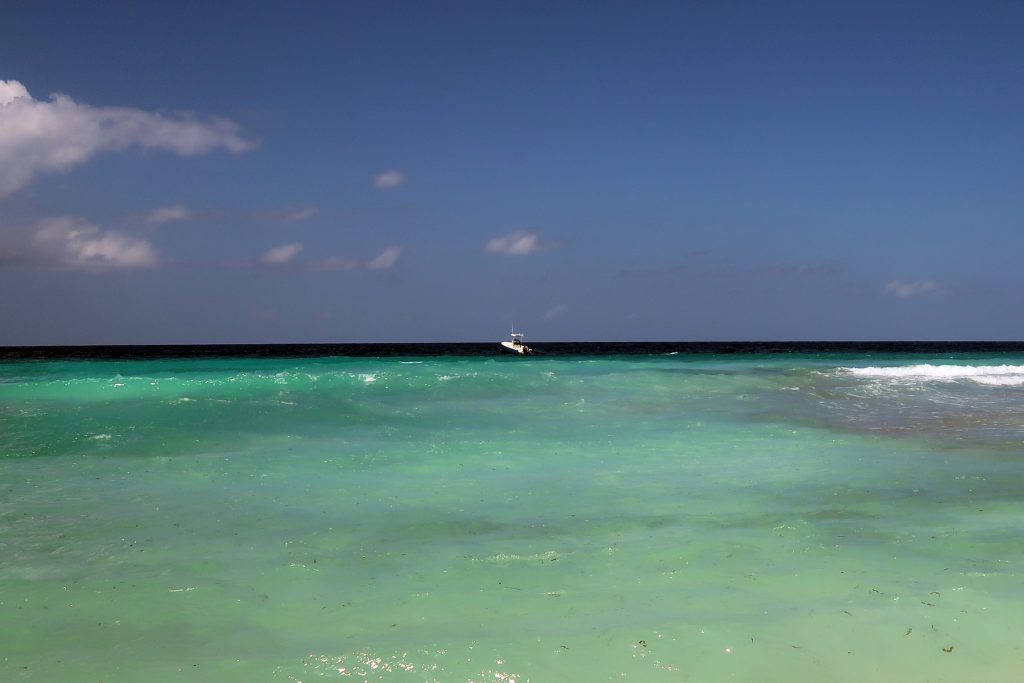
With the northwest wind continuing to blow, the reef became lost in milky waters and the SOSF-D’Arros Research Centre research vessel appeared stranded beyond the break line. Photo by Lauren Peel | © Save Our Seas Foundation
As the days continued to pass and the wind kept blowing, the team again realised that Plan A was not going to be an option. I’d not only be deploying my first tag on a feeding manta ray at the surface, but in very bumpy waters. I’m not going to lie, I was nervous – satellite tags are worth thousands of dollars and I was only going to have one chance – but I was eager to take on the challenge and on November 22 my chance came.
The waters were rough around D’Arros Island that morning and so the Team travelled to the south of the neighbouring St Joesph Atoll to search for mantas. To our delight, we came across a group of 6 individuals feeding at the surface near a small atoll island called Banc Coco. It was only when we entered the water however, that we realised just how big two of the females were and how perfect they would be for a satellite tag…
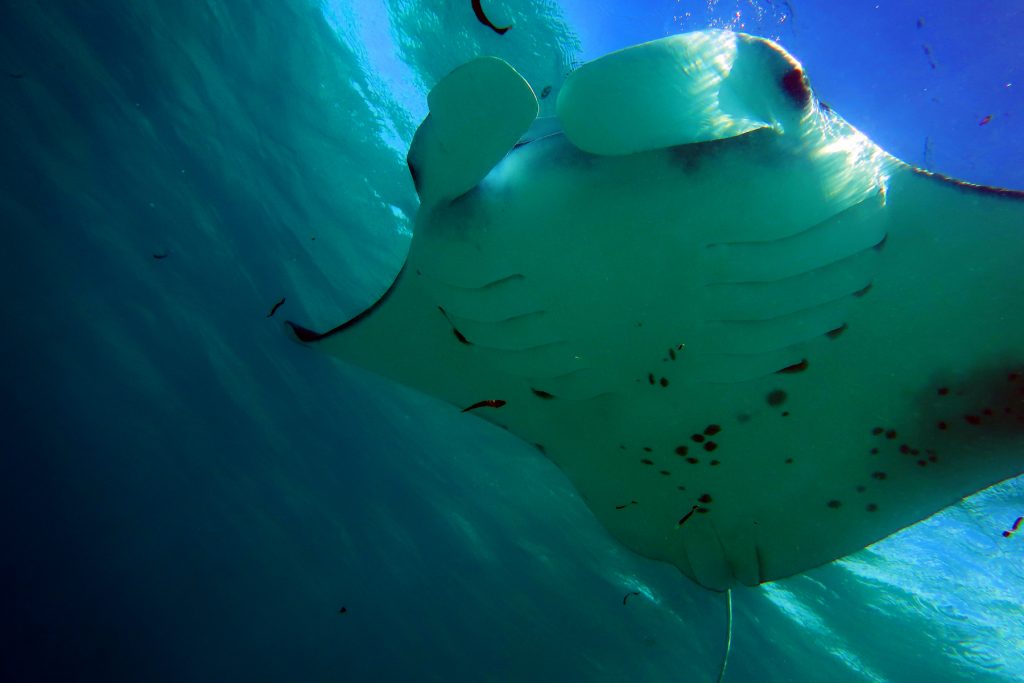
A large female manta ray passes over the head of Project Leader Lauren Peel as she captures an ID shot. Photo by Lauren Peel | © Save Our Seas Foundation
One particular female stood out to us as she was moving slowly and did not change course when I approached her to take an ID photograph. This was it. With her photograph taken I quickly swam back to the research boat and set up the satellite tag for deployment while Ryan kept track of the mantas movements. Tag ready, he manoeuvred the boat so that I could enter the water in front of her and approach her quietly. One million questions rushed through my head as I put my mask on my face – Is the tag set up correctly? Would I deploy it in the right place? Would it stay on for more than an hour? – but I pushed all of them aside. This was my chance, and I was going to be excited about it.
The boat was in place and it was time. The manta was heading my way and the current was in my favour; I entered the water. As I approached her I noticed that she was now swimming deeper in the water column and I’d have to wait for her to come back closer to the surface before I’d be able to tag her. I kicked as hard as I could, but keeping up with a manta is not an easy task! She was getting further and further away – I called to Ryan. I’d get back on the boat and try again.
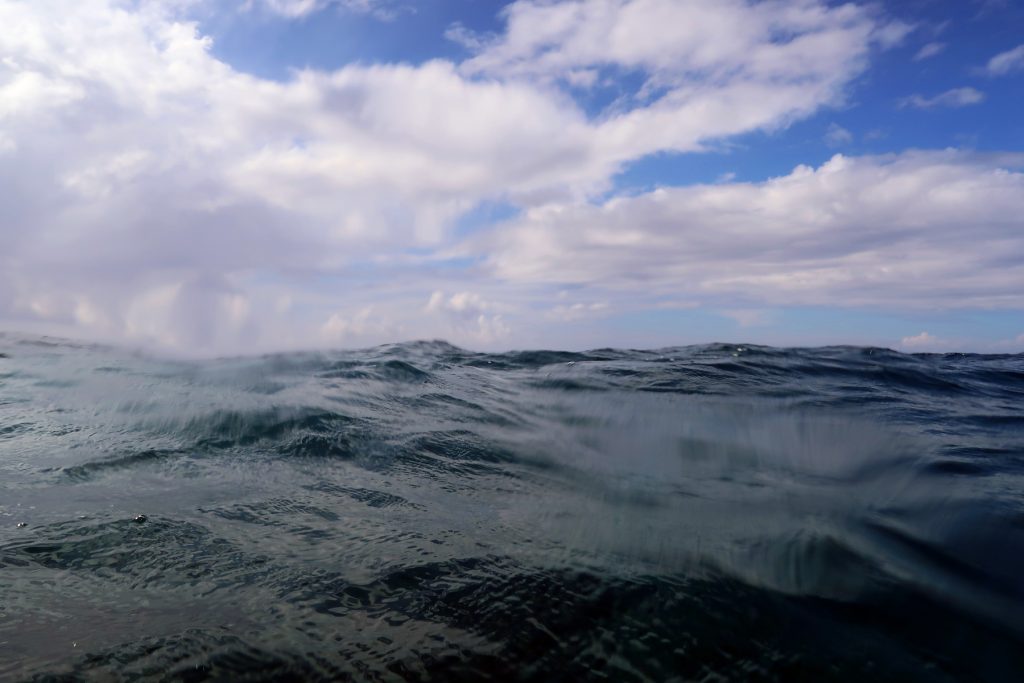
When the conditions look like this it can be extremely difficult to keep sight of manta rays from within the water. Constant communication between snorkelling team members those on the boat is key. Photo by Lauren Peel | © Save Our Seas Foundation
Within a minute the boat was in position. The manta was back at the surface, travelling slowly, and coming right for us. I checked the tag and my gear again and everything was ready. “Okay, go!” Ryan said. I entered the water and started to swim towards her.
This time I caught up to her in an instant and before I knew it I was right behind her, just to the left of her tail. With a wingspan almost 4 metres wide, it was awe-inspiring to watch her move through the water. I stayed close by her as I focussed in on the spot where I wanted her tag. I was in position, the tag was ready, I just had to release it.
I took two deep breaths and began to count down…3…2…1…
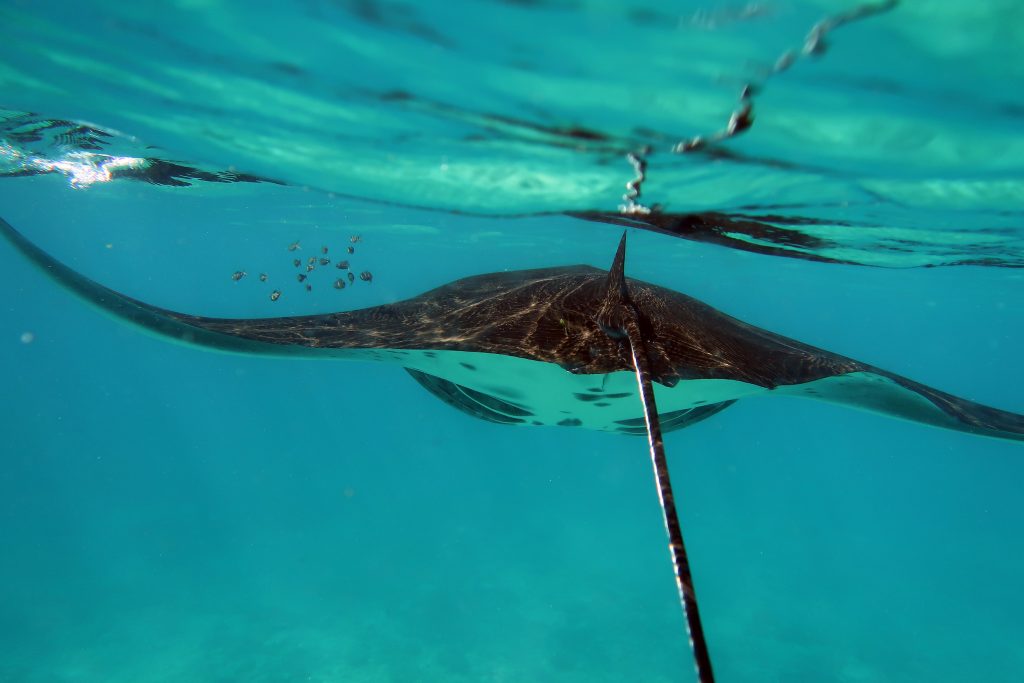
Swimming right behind the manta ray, Project Leader Lauren Peel prepares the satellite tag for deployment. Photo by Lauren Peel | © Save Our Seas Foundation
Deployed! As I watched the manta – since identified from the manta ID database as ‘God of Stingrays’ – swim away with the tag I was so happy. Months of planning for this fieldtrip, and weeks of waiting for the right mantas to come along, and it was finally done with 6 days to spare! My smile grew even bigger the following morning when I checked my Inbox and saw that there was no email from the company that makes the tags, telling me that the tag had released early from the study animal. Not only was my first tag now deployed and collecting brand new information about manta ray movement patterns in Seychelles, it looked like it was going to stay on the manta!
Mission accomplished.
Fieldwork is always full of ups and downs, but it is the challenges that we face and overcome along the way that make it such an incredible and valuable experience. With just two days left on D’Arros, I can’t wait to see what final surprises the magical waters of this island have in store for us.
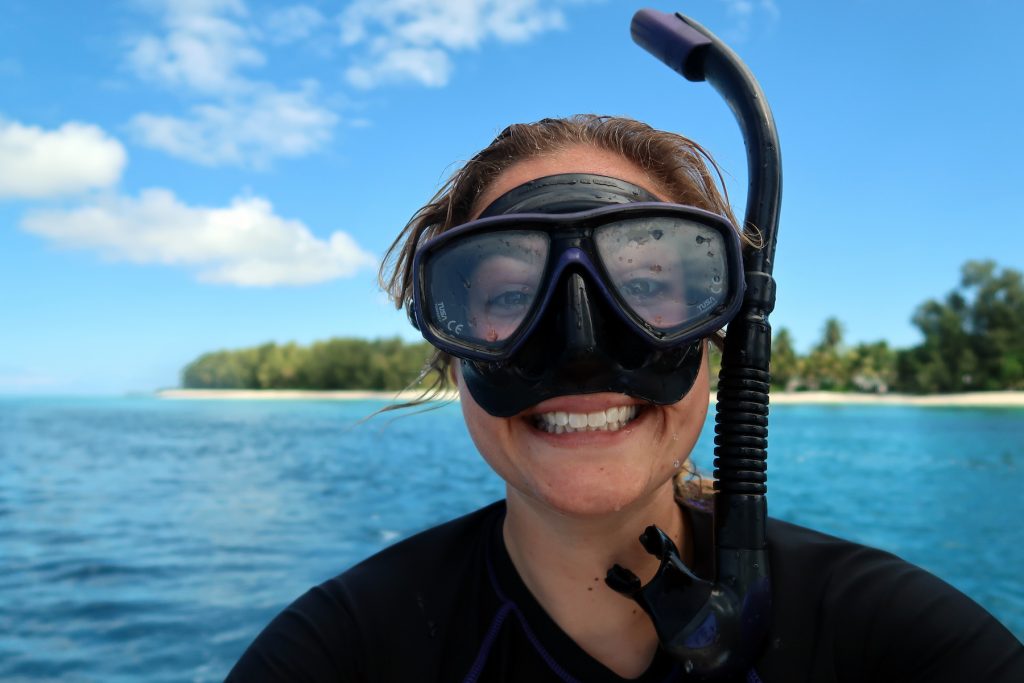
Project Leader Lauren Peel celebrates the deployment of all three satellite tags on reef manta rays at D’Arros Island. Photo by Lauren Peel | © Save Our Seas Foundation
